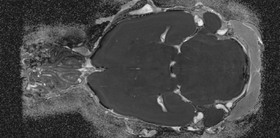Documentation/4.8/Modules/dtiprocess
From Slicer Wiki
Home < Documentation < 4.8 < Modules < dtiprocess
|
For the latest Slicer documentation, visit the read-the-docs. |
DTIProcess
DTIProcess
General Information
Module Type & Category
Type: CLI
Category: Diffusion.NIRALPipeline
Authors, Collaborators & Contact
Author: Casey Goodlett
Contributors:
Contact: name, email
Module Description
| Program title | DTIProcess |
| Program description | dtiprocess is a tool that handles tensor fields. It takes as an input a tensor field in nrrd format.\nIt can generate diffusion scalar properties out of the tensor field such as : FA (--fa_output), Gradient FA image (--fa_gradient_output), color FA (--color_fa_output), MD (--md_output), Frobenius norm (--frobenius_norm_output), lbd1, lbd2, lbd3 (--lambda{1,2,3}_output), binary map of voxel where if any of the eigenvalue is negative, the voxel is set to 1 (--negative_eigenvector_output) \nIt also creates 4D images out of the tensor field such as: Highest eigenvector map (highest eigenvector at each voxel) (--principal_eigenvector_output)\n Masking capabilities: For any of the processing done with dtiprocess, it's possible to apply it on a masked region of the tensor field. You need to use the --mask option for any of the option to be applied on that tensor field sub-region only. If you want to save the masked tensor field use the option --outmask and specify the new masked tensor field file name.\ndtiprocess also allows a range of transformations on the tensor fields. The transformed tensor field file name is specified with the option --deformation_output. There are 3 resampling interpolation methods specified with the tag --interpolation followed by the type to use (nearestneighbor, linear, cubic) Then you have several transformations possible to apply:\n\t- Affine transformations using as an input \n\t- itk affine transformation file (based on the itkAffineTransform class)\n\t- Affine transformations using rview (details and download at http://www.doc.ic.ac.uk/~dr/software/). There are 2 versions of rview both creating transformation files called dof files. The old version of rview outputs text files containing the transformation parameters. It can be read in with the --dof_file option. The new version outputs binary dof files. These dof files can be transformed into human readable file with the dof2mat tool which is part of the rview package. So you need to save the output of dof2mat into a text file which can then be used with the -- newdof_file option. Usage example: dof2mat mynewdoffile.dof >> mynewdoffile.txt \t dtiprocess --dti_image mytensorfield.nhdr --newdof_file mynewdoffile.txt --rot_output myaffinetensorfield.nhdr \nNon linear transformations as an input: The default transformation file type is d-field (displacement field) in nrrd format. The option to use is --forward with the name of the file. If the transformation file is a h-field you have to add the option --hField. |
| Program version | 1.0.1 |
| Program documentation-url | http://www.nitrc.org/projects/dtiprocess |
Usage
Quick Tour of Features and Use
A list panels in the interface, their features, what they mean, and how to use them.
|
More Information
More information is available on the project webpage: http://www.nitrc.org/projects/dtiprocess
Acknowledgment
References
Publications related to this module go here. Links to pdfs would be useful.


